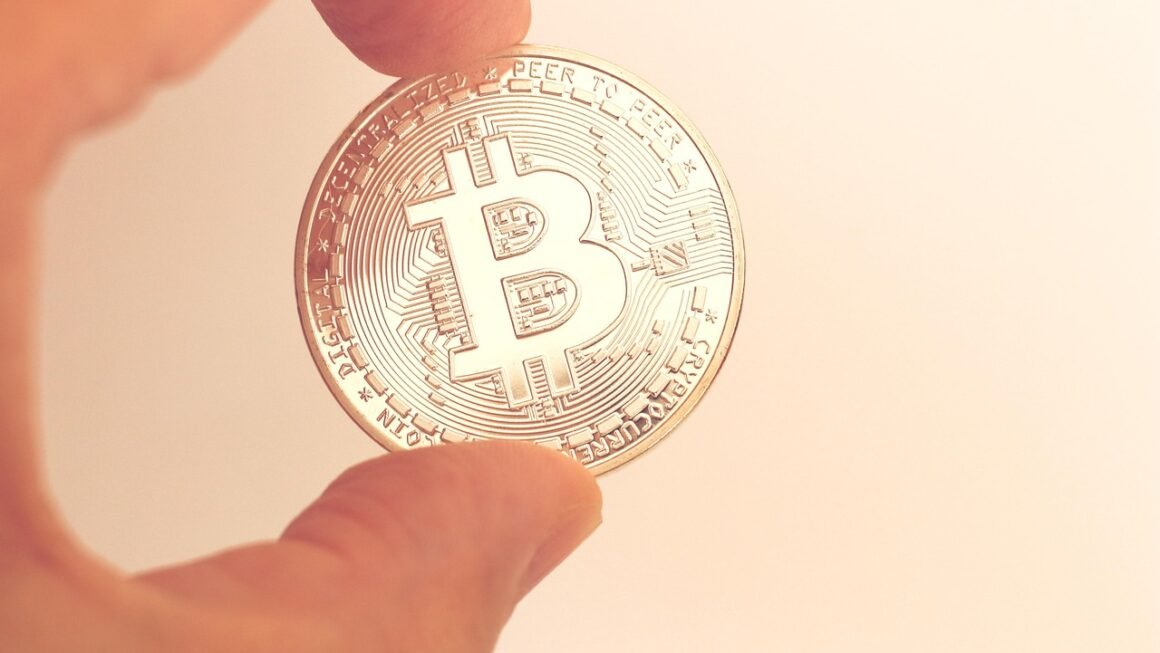The world of finance is constantly evolving, and at the forefront of this evolution are crypto assets. More than just digital currencies, crypto assets encompass a broad range of applications and technologies, offering new possibilities for investment, payments, and decentralized systems. Understanding these assets is crucial for anyone looking to navigate the modern financial landscape. This article provides a comprehensive overview of crypto assets, exploring their types, benefits, risks, and practical uses.
What are Crypto Assets?
Defining Crypto Assets
Crypto assets are digital representations of value or contractual rights that rely on cryptography and distributed ledger technology (DLT), such as blockchain, for security and verification. They exist only in digital form and are often decentralized, meaning no single entity controls them. Unlike traditional assets like stocks or bonds, crypto assets operate independently of central banks or financial institutions.
- Key characteristics:
Digital and virtual: Exists only in digital form.
Decentralized: Operates on a distributed network.
Cryptographically secured: Uses encryption for security.
Transparent: Transactions are recorded on a public ledger (in many cases).
Global: Can be transferred and used anywhere in the world with internet access.
Types of Crypto Assets
Crypto assets can be categorized into several types, each serving different purposes:
- Cryptocurrencies: Designed to function as a medium of exchange. Examples include Bitcoin (BTC), Ethereum (ETH), and Litecoin (LTC). These are often volatile and subject to market speculation.
- Stablecoins: Pegged to a stable asset, such as the US dollar, to minimize price volatility. Examples include Tether (USDT) and USD Coin (USDC). These are used to facilitate trading and payments without the extreme fluctuations associated with other cryptocurrencies.
- Security Tokens: Represent ownership in a real-world asset, such as equity in a company or real estate. These are subject to securities regulations and offer fractional ownership opportunities.
- Utility Tokens: Provide access to a specific product or service on a blockchain platform. Examples include Basic Attention Token (BAT) which powers the Brave browser’s rewards system.
- Non-Fungible Tokens (NFTs): Unique digital assets that represent ownership of a specific item, such as digital art, collectibles, or virtual land.
- Example: Imagine a company issues a security token representing a share of its profits. Investors who hold these tokens receive a proportional share of the company’s earnings, similar to traditional stock dividends. This token can be traded on a decentralized exchange.
Benefits of Investing in Crypto Assets
Potential for High Returns
Crypto assets have the potential for significant returns, although they also carry a high degree of risk. Early investors in Bitcoin and Ethereum, for example, experienced substantial gains as these cryptocurrencies gained adoption and increased in value.
- Examples of potential ROI:
Bitcoin (BTC): Early adopters saw returns of hundreds of thousands of percent.
Ethereum (ETH): Investors who bought in early saw exponential growth as the platform’s ecosystem expanded.
Diversification
Adding crypto assets to an investment portfolio can provide diversification benefits, as their price movements are often uncorrelated with traditional assets like stocks and bonds. This lack of correlation can help reduce overall portfolio risk.
- Benefits of diversification:
Reduced overall portfolio volatility.
Potential for higher risk-adjusted returns.
Decentralization and Transparency
Crypto assets operate on decentralized networks, reducing reliance on central authorities and increasing transparency. Transactions are recorded on a public ledger, which can be audited and verified by anyone.
- How Decentralization Works:
Transactions are verified by multiple nodes on the network.
No single point of failure or control.
Increased security and resistance to censorship.
Innovation and New Technologies
Investing in crypto assets allows individuals to participate in the development of innovative technologies, such as blockchain, DeFi (Decentralized Finance), and Web3. These technologies have the potential to disrupt traditional industries and create new opportunities.
- Examples of innovative technologies:
DeFi: Offers decentralized lending, borrowing, and trading platforms.
Web3: Aims to create a more decentralized and user-centric internet.
Risks Associated with Crypto Assets
Volatility
Crypto asset prices can be highly volatile, experiencing significant swings in short periods. This volatility can lead to substantial gains, but also significant losses.
- Mitigating Volatility:
Diversify your crypto portfolio.
Invest gradually using dollar-cost averaging.
Set stop-loss orders to limit potential losses.
Security Risks
Crypto assets are vulnerable to security threats, such as hacking, theft, and scams. It’s essential to take precautions to protect your crypto holdings.
- Security Best Practices:
Use strong, unique passwords.
Enable two-factor authentication (2FA).
Store crypto assets in a cold wallet (offline).
Be wary of phishing scams and fake websites.
Regulatory Uncertainty
The regulatory landscape for crypto assets is still evolving, and new regulations could impact the value and utility of these assets. Governments around the world are grappling with how to regulate cryptocurrencies and other crypto assets, leading to uncertainty and potential risks.
- Staying Informed:
Follow regulatory developments in your jurisdiction.
Consult with a legal or financial advisor.
Lack of Insurance
Unlike traditional bank accounts, crypto assets are not typically insured by government agencies like the FDIC. This means that if your crypto holdings are lost or stolen, you may not be able to recover them.
- Considerations:
Understand the risks associated with uninsured assets.
Explore custodial services that offer insurance or security guarantees (but understand their limitations and costs).
Practical Applications of Crypto Assets
Payments
Cryptocurrencies can be used to make payments for goods and services, both online and in-person. They offer faster and cheaper transactions compared to traditional payment methods, especially for international transfers.
- Examples:
Online retailers accepting Bitcoin or Ethereum.
Cross-border payments using stablecoins to avoid high transaction fees.
Decentralized Finance (DeFi)
DeFi platforms offer a range of financial services, such as lending, borrowing, and trading, without the need for intermediaries like banks. These platforms operate on blockchain technology and are accessible to anyone with an internet connection.
- DeFi Examples:
Lending crypto assets on platforms like Aave or Compound to earn interest.
Trading tokens on decentralized exchanges (DEXs) like Uniswap or SushiSwap.
Providing liquidity to decentralized markets and earning transaction fees.
Supply Chain Management
Blockchain technology can be used to track and trace goods throughout the supply chain, improving transparency and efficiency. This can help reduce fraud, ensure product quality, and streamline logistics.
- How it works:
Each product is assigned a unique digital identity on the blockchain.
Every transaction and movement of the product is recorded on the blockchain.
Stakeholders can access the blockchain to verify the product’s authenticity and track its journey.
Digital Identity
Crypto assets can be used to create secure and verifiable digital identities, allowing individuals to control their personal data and access services without relying on centralized authorities. This can help protect against identity theft and improve privacy.
- Benefits of digital identity:
Secure and verifiable credentials.
Control over personal data.
Reduced reliance on centralized identity providers.
Getting Started with Crypto Assets
Choosing a Crypto Exchange
Selecting a reputable and secure crypto exchange is the first step to buying and selling crypto assets. Consider factors such as fees, security measures, and the range of assets offered.
- Popular Crypto Exchanges:
Coinbase
Binance
Kraken
Setting up a Crypto Wallet
A crypto wallet is used to store, manage, and transact with crypto assets. There are different types of wallets, including hardware wallets, software wallets, and online wallets.
- Types of Wallets:
Hardware wallets (e.g., Ledger, Trezor): Offer the highest level of security by storing private keys offline.
Software wallets (e.g., Exodus, Trust Wallet): Convenient and easy to use, but less secure than hardware wallets.
Online wallets (e.g., exchange wallets): Stored on a centralized exchange, offering convenience but also posing a security risk.
Educating Yourself
Before investing in crypto assets, it’s crucial to educate yourself about the technology, market dynamics, and risks involved. Stay informed about industry news, regulatory developments, and security best practices.
- Resources for Education:
Online courses (e.g., Coursera, Udemy)
Industry websites and blogs (e.g., CoinDesk, CoinMarketCap)
Financial advisors specializing in crypto assets
Conclusion
Crypto assets represent a significant innovation in the financial world, offering new opportunities for investment, payments, and decentralized systems. While they come with risks, understanding these assets and taking appropriate precautions can unlock substantial potential benefits. As the crypto landscape continues to evolve, staying informed and adapting to new developments is key to navigating this exciting and transformative technology. Remember to always do your own research and consult with a financial advisor before making any investment decisions.


